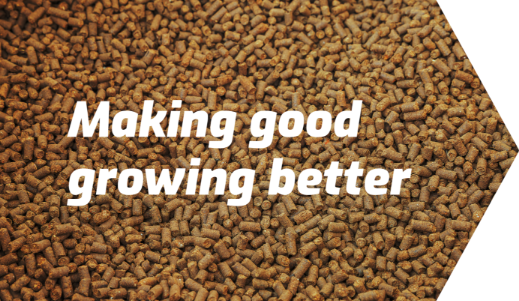
Soils vary in physical and chemical composition. The average handful of soil contains billions of different living organisms that carry out various functions to help facilitate plant health, regardless of the soil’s properties.
Organisms include larger creatures like earthworms and nematodes, to microscopic organisms including, bacteria, fungi, algae and protozoa. These tiny creatures play a critical role in maintaining soil health and fertility.
How do fertilizers (both natural and synthetic) work?
Plants have thrived without human intervention for millions of years. However, to maximize growth and crop yields, plants typically need a combination of three basic macro-nutrients – nitrogen, phosphorous and potassium. In addition, plants require a slew of other nutrients throughout their growth cycle.
The majority of a plant’s nutrients are derived from beneficial organisms working in the soil surrounding the plant’s roots; this process is known as the soil foodweb (a term made popular by Dr. Elaine Ingham, a leading microbiologist). In addition to supplying nutrients to plants, organisms benefit plants in a variety of other ways, including:
- retaining nutrients in the soil, preventing them from leaching,
- competing with, inhibiting and consuming diseases,
- decomposing plant residue, toxic materials and pollutants that kill plant roots, and
- forming soil aggregates that improve water infiltration, root penetration and water-holding capacity of the soil.
Once the nutrients are available, soil organism’s aid in a process known as mineralization, which is where nutrients are broken down and returned to their mineral forms. This allows the plant to take in the nutrients as needed.
Pesticides, herbicides and conventional fertilizers with a high salt index can kill beneficial organisms. When this happens, the plants lose the benefits created by beneficial organisms (mentioned earlier). Since beneficial organisms have long lifecycles, they require time to recover and regain control after chemical exposure. However, when exposure to pesticides, herbicides and fertilizers is spread out, the affect they have on beneficial organisms isn’t as detrimental.
The effects of cultivation
It’s also important to understand the effects cultivation has on soil. When the soil is disturbed, some of the soil aggregates are broken allowing the organic matter to mix. This results in bacteria predominating compared to fungi. As a result, the pH of the soil becomes more alkaline.
Next, the soil loses nutrients as a result of the turf not being replaced, causing the bacterial population to be reduced. The reduced numbers of bacteria and fungi causes the cycling of nutrients (nitrogen, phosphorus, magnesium, etc.) to drop. To counteract this drop, these nutrients are generally replaced by manures, organic fertilizers and compost.
The soil’s health and foodweb can be reestablished by using a variety of food resources, which in turn provides diversity in beneficial organisms. In some instances, a chemical pesticide or fungicide may be necessary, however, moderation is imperative.
Trust Nature Safe’s expertise
With decades of soil and plant research on our team, Nature Safe understands that to have healthy crops and turf , it’s important to pay close attention to the beneficial organisms in the soil and to limit the use of synthetic solutions. Because ultimately, when the foodweb is in balance, your plants will be healthiest.
